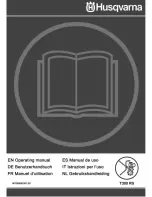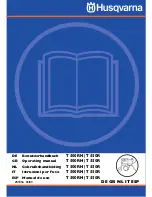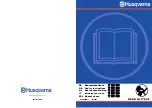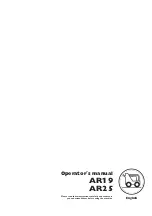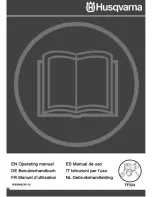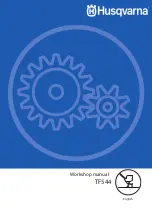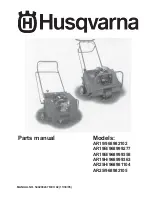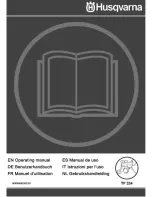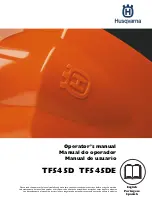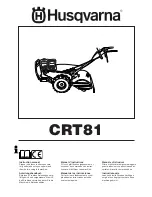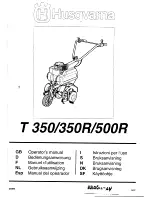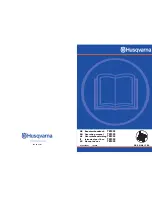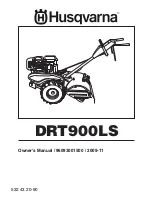
26
EN
ROUTINE MAINTENANCE PERFORMED By USERS
N.B.: Accurate maintenance always saves money and increases
safety!
At the start of each air-conditioning season, at the start of each heat-
ing season and then at least once a month, perform the following
operations:
▪ Clean the outside of the unit with a damp cloth.
▪
AIR FILTER:
Before cleaning the filter, remove it from the unit.
Removing the filter
1.
a-LIFE3/i-LIFE2 DLMV, DLIO, DLMO, DLIV - Turn the filter
downwards, pressing on the free rear side of the filter housing,
and remove it as shown in fig. 1;
2.
a-LIFE3/i-LIFE2 DFMV, DFMO - Turn the two plastic screws
¼ of a turn and remove the front intake grill by sliding it on the
guides as shown in Fig. 2; then remove the filter from the back
of the grill;
3.
a-LIFE3/i-LIFE2 DFIO, DFIV - Turn the filter by pressing on the
free side of the filter housing and remove it by sliding it along the
guides.
▪ Clean the unit by beating the lining, washing it with a jet of soap and
water, or with a jet of compressed air. IMPORTANT: to clean the filter,
the jets of air or water must be directed in the opposite direction to
that of normal air extraction and they must not be so violent as to
damage the filter medium. If the filters are cleaned with water, leave
them to dry with care before using them so as not to compromise
system efficiency.
▪
CONDENSATE DRAIN:
During the summer season, make sure that
the condensate drain is not obstructed and that the tray is free of dust
and the like. Any dirt could block the drain and cause the condensate
to overflow.
ANNUAL CONTROLS
To ensure the unit works properly and remains in good condition, have
qualified technical staff perform periodic maintenance operations at
least once a year.
▪ Checking the electrical components:
-Check all the electrical equipment, making sure the electrical con-
nections are perfectly tight.
-Verify and check the capacitance of the fan capacitor (AC ver-
sions only).
▪ Make sure all the bolts, nuts and flanges that may have come loose
due to vibrations are perfectly tight.
▪ Check that there are no traces of dust, dirt or other impurities on
the motor. Periodically check that the unit works without generating
vibrations or strange noises, that the ventilation circuit inlet is not
obstructed with the consequent possibility of before using them the
windings overheating.
▪ Make sure there is no dirt and no foreign bodies on the fan screw.
USER INSTRUCTIONS: MAINTENANCE, CLEANING
▪ These units are built using modern technologies that assure long-term high
efficiency and performance levels.
▪ It is essential to establish and follow a regular inspection and maintenance pro-
gramme. The following maintenance programme was established considering
optimal air pollution conditions in the place of installation. The indicated main-
tenance frequencies are purely indicative and can vary depending on effective
operating conditions. The most aggressive atmospheric conditions occur when
there is an abnormal quantity of industrial fumes, salts, chemical fumes and
industrial dust.
TO CLEAN THE UNIT
ATTENTION! Disconnect the unit from the main power supply
before cleaning it.
Do not direct jets of water on the unit. This may cause electrocution or damage
the unit. Do not use hot water, abrasive substances or solvents; use a soft cloth
to clean the unit. If possible, do not use while the area is being cleaned.
USER INSTRUCTIONS: ASSISTANCE
ATTENTION ! Always ensure that all installation, start-up and maintenance operations, etc. are performed by professionally
qualified people.
Before calling the Technical Assistance Service, make sure you have the following machine documentation to hand:
▪ Model of unit and Serial number
▪ Brief description of the type of installation
USER INSTRUCTIONS: SPARE PARTS
To maintain safety and quality levels, only replace machine parts with original spare parts and components.
When ordering spare parts, always indicate the model of the unit and the description of the component.
REPLACING COMPONENTS
▪ As specific technical skills are required to replace components, always call in an authorised Technical Assistance Centre.
▪
ATTENTION! All replacement operations must be performed with the unit switched off and disconnected from the water and
mains power supplies.
DISPOSAL
At the end of their lifetime, dispose of the units in compliance with the regulations in force in the country of installation.
The units are made from the following materials:
▪ Aluzinc sheet - Stainless steel sheet - Galvanised steel sheet
▪ Copper - Aluminium - Stainless steel
▪ Polyester - Polyethylene - Fibreglass - Plastic
All consumable and replaced parts must be disposed of safely and in compliance with environmental protection regulations.
Fig. 1
Fig. 2
a-LIFE3
DLMV, DLIO, DLMO, DLIV
i-LIFE2
DLMV, DLIO, DLMO, DLIV
a-LIFE3 DFMV, DFMO
i-LIFE2 DFMV, DFMO
Содержание a-LIFE3
Страница 30: ...REV01 2018 07 04 ...
























